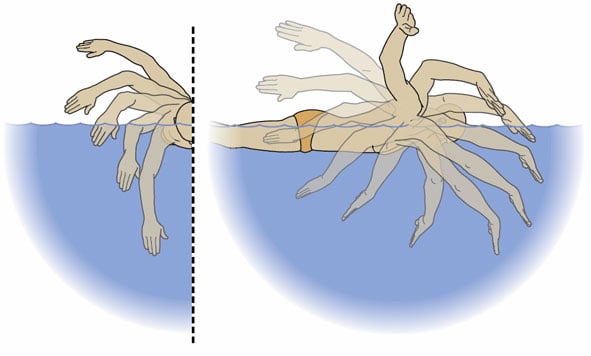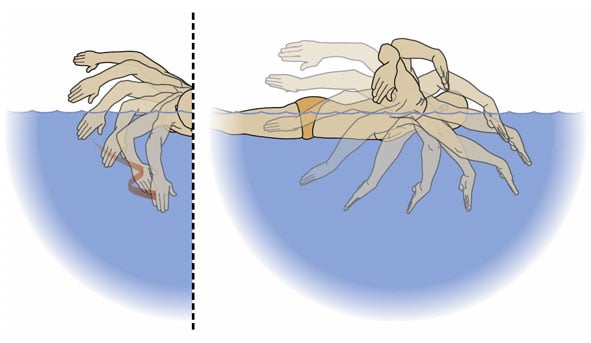https://youtu.be/eRkZTclaEsA
Paddle vs. Propeller: Which Olympic Swimming Stroke is Superior? Professor Rajat Mittal explains his findings.
Freestyle Square-Off
Johns Hopkins mechanical engineering Professor Rajat Mittal made a splash in 2008 with an analysis of the butterfly kick perfected by Olympic gold medalist Michael Phelps. Turns out: Phelps uses his body more like a dolphin than most other competitors, making him one of the fastest swimmers in history.
With the 2012 Summer Olympics weeks away, Mittal has turned attention to the freestyle stroke. For years, debate has raged over the best way to propel a swimmer forward. Mittal and colleague Alfred von Loebbecke, of George Washington University, have a paper that will appear in the Journal of Biomechanical Engineering in 2012. It may settle the score.
The Debate
In the 1950s, legendary swimming coach James “Doc” Counsilman introduced scientific principles and stroke mechanics to the sport. Counsilman rejected the idea that a freestyler should pull his arm straight through the water like a paddle. Instead, he introduced the idea that a swimmer would go faster with a bent elbow, using a sculling, or S-curve, motion with the hand, more akin to a propeller.
The Theory
The S-curve scull would generate more lift because the hand was moving perpendicular to the swimming direction. As a result, this style would create more thrust, propelling the swimmer faster through the water.
While most swimmers use a combination of sculling and deep-catch styles, the methods are distinctive. In general, sprinters opt for the deep-catch, but this requires more power from the upper back and shoulders. Distance swimmers utilize the sculling style. Coaches have observed that swimmers will use sculling when fatigued.
The Study
Mittal and Loebbecke used laser body scans of two elite Olympic-level swimmers and underwater video to create a computational fluid dynamic model to compare the two freestyle strokes. With animation software, they were able to use the body scans to create three-dimensional models of the arm moving through the water and calculate the lift, drag, and thrust for each style.
The Results
Mittal’s study found that the lift force provided most of the thrust in both strokes. In fact, between 52% and 77% of the propulsive force, or thrust, came from lift. Somewhat surprisingly, the study concluded that the deep-catch style produced almost 50% more thrust than the sculling style. It also appears that the sculling motion decreases the contribution of drag to propulsion. Bottom line: The deep-catch style, often used by sprinters, is the more effective style.
“Deep-Catch” Method
Swimmers keep arms straighter, dive fingertips toward the pool floor, reach deep, cup hands as a paddle, and push as much water as possible behind themselves to propel forward. This approach was thought to produce thrust mostly through drag because the hand is moved parallel to the water for a longer period of time. The deep-catch style is growing in popularity, especially among sprinters.

“Sculling” Method
Swimmers keep a high elbow as the hand enters the water. The elbow stays bent during the stroke. The hand carves out an S curve or sculls through the water. Some coaches tell young swimmers to “scoop the ice cream bowl.” A swimmer’s hand then pushes water behind the body to complete the stroke. Because the hand has significant motion perpendicular to the swimming direction, this style is thought to generate most of the thrust through lift. The style came into vogue after Counsilman’s work.





